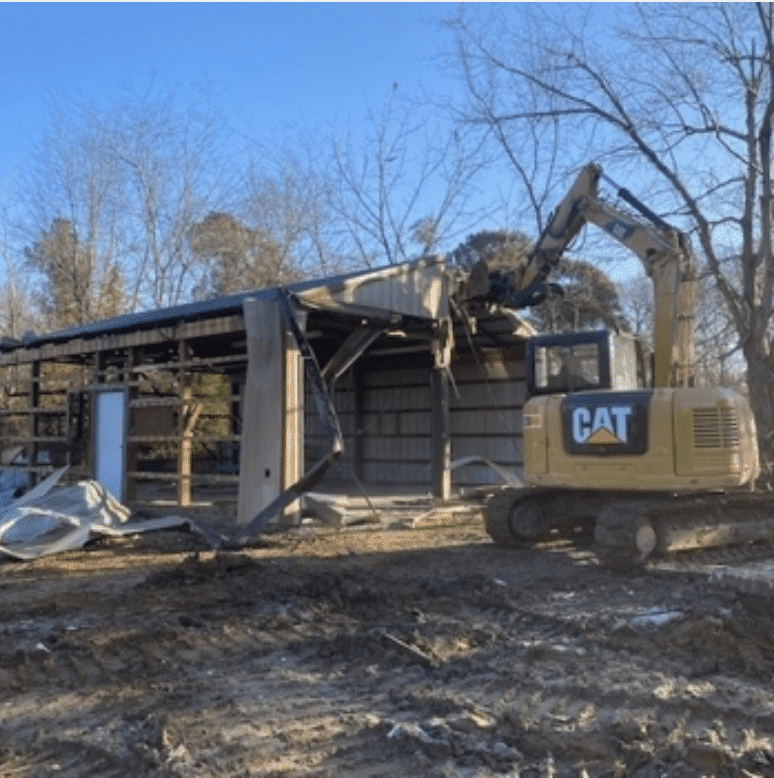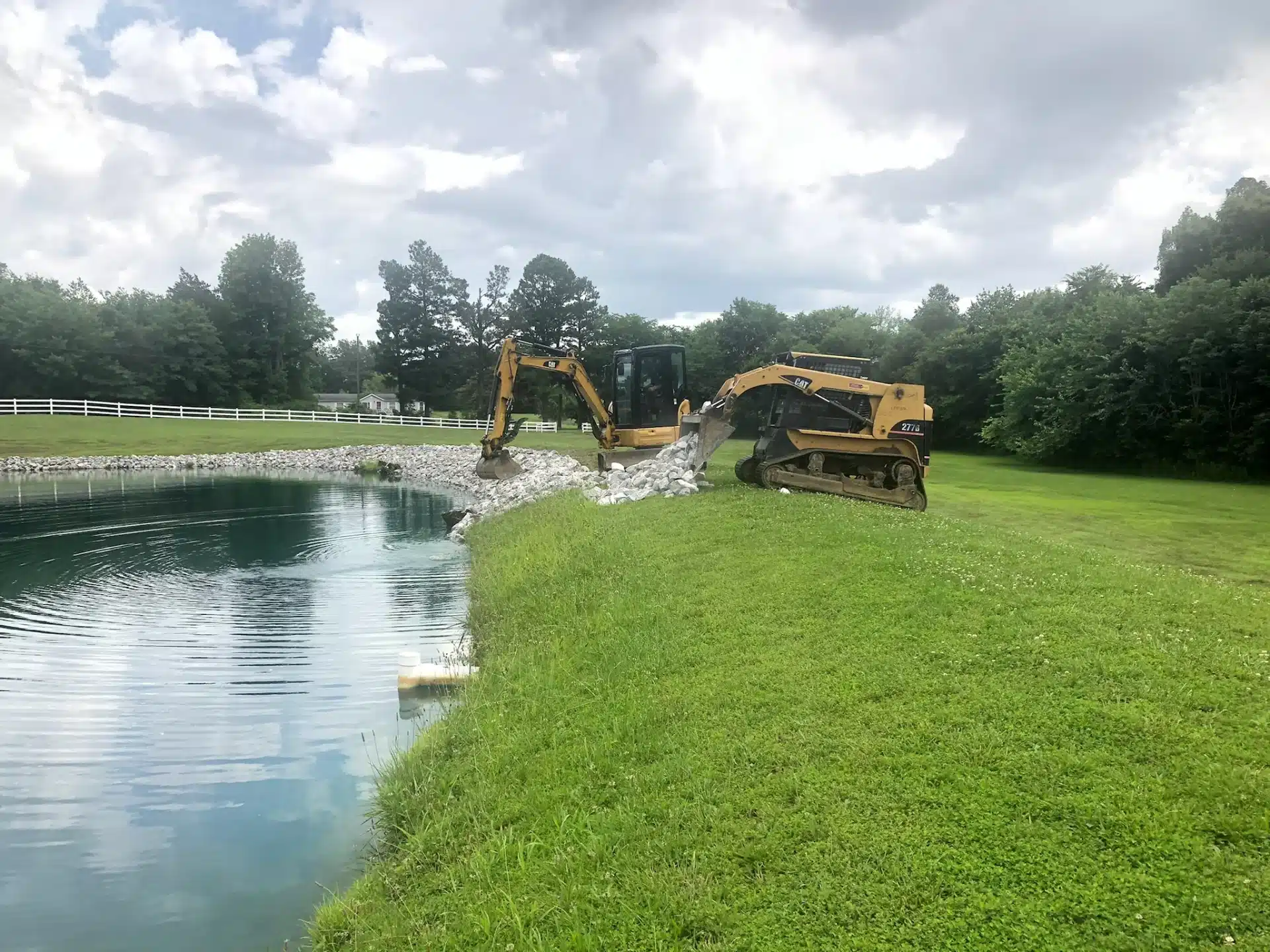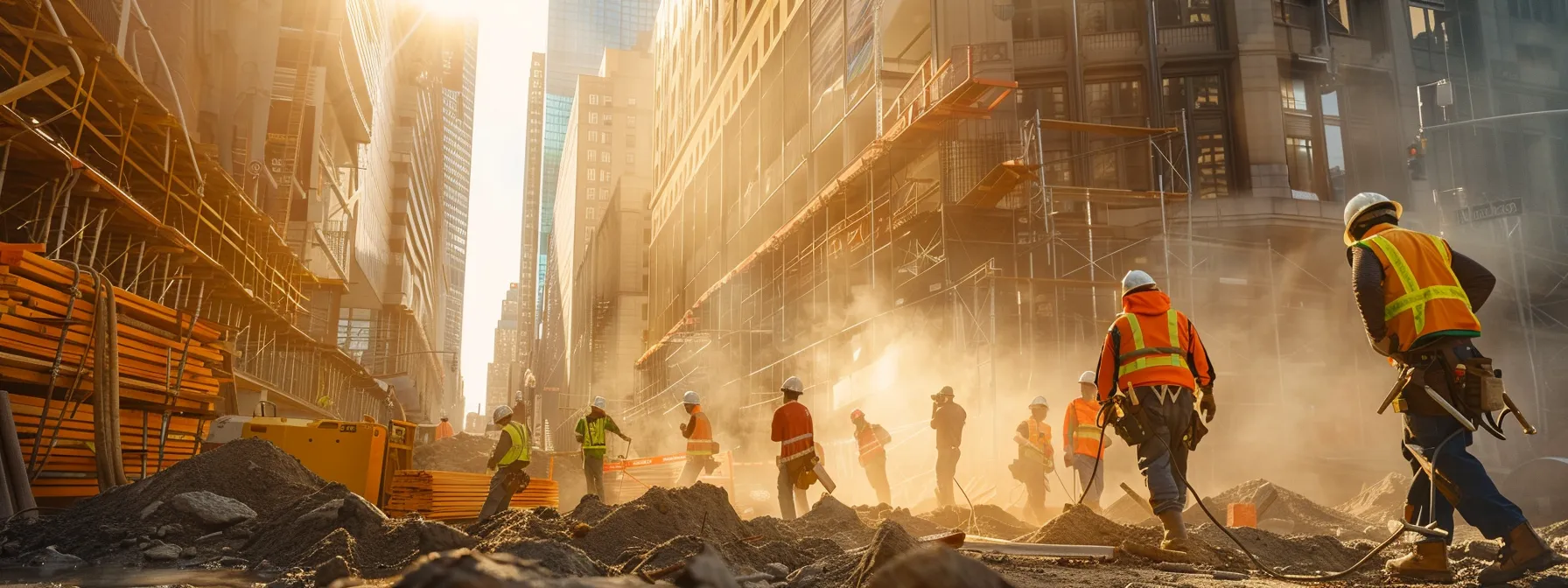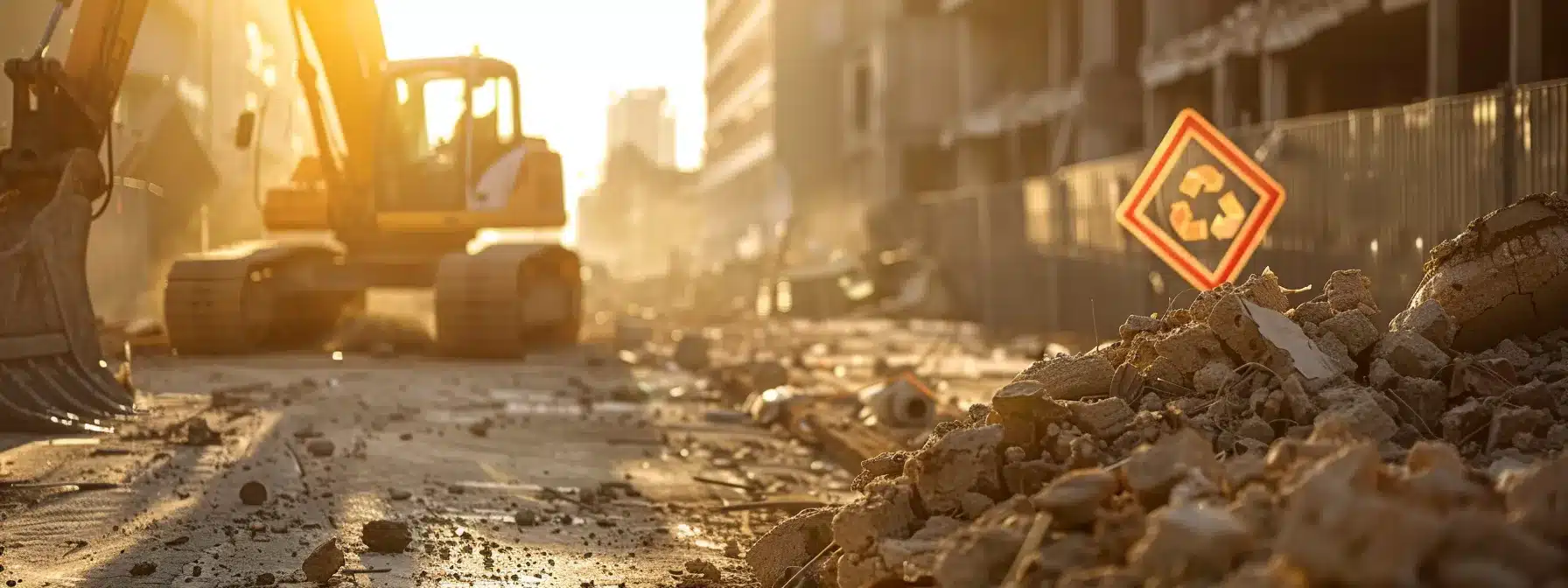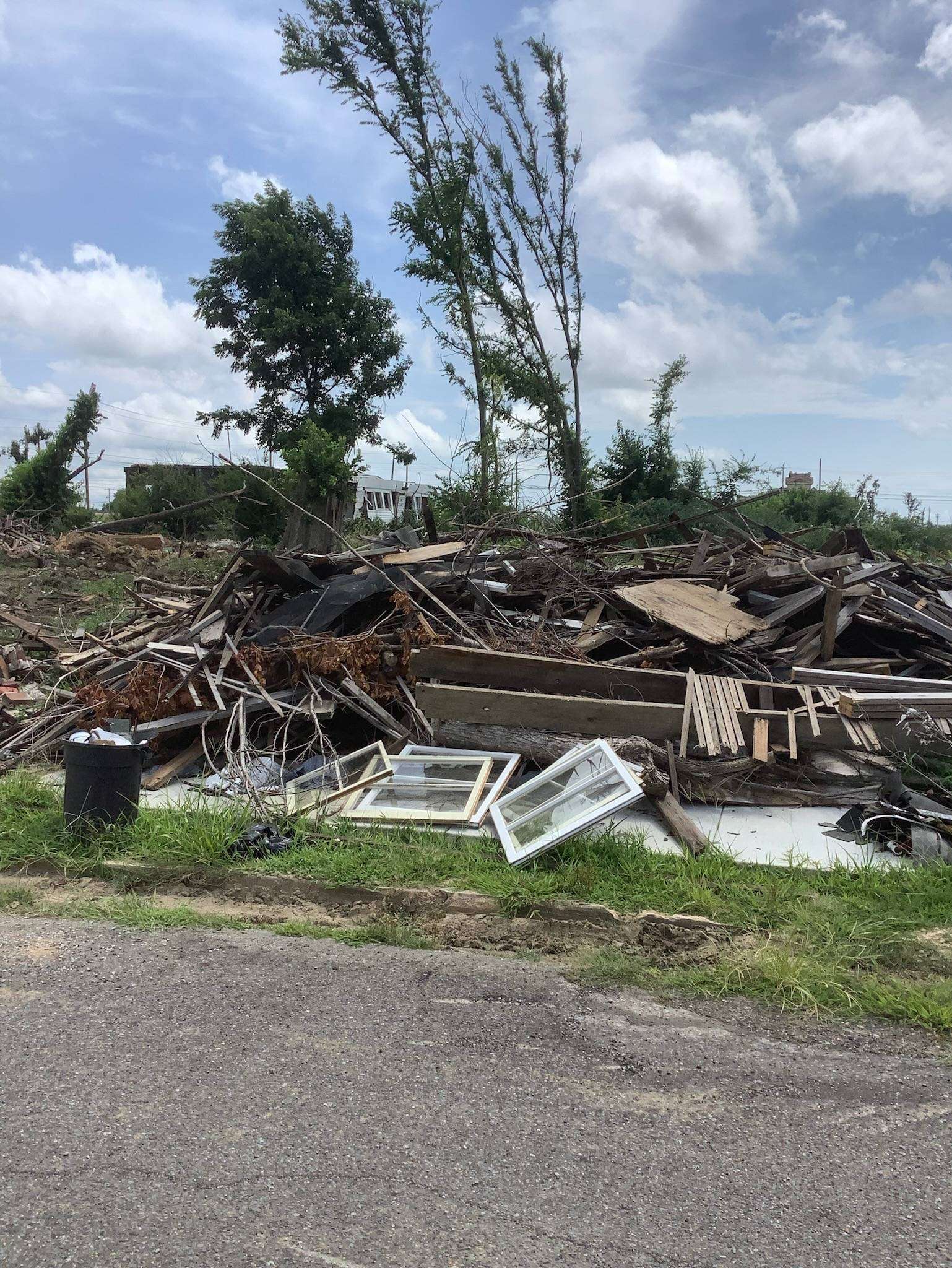Play a vital role in protecting landscapes from the damaging effects of erosion. From sediment control products to erosion control blankets, there are various options available to help prevent soil erosion and promote vegetation growth.
Understanding how these products work and their benefits is essential for choosing the right solution for your specific needs. In this article, we will explore the different types of erosion control products, how they work, the benefits of using them, and how to select the best option for your project.
Valuable Key Considerations to Keep in Mind:
- Erosion control products are essential in preventing soil erosion and promoting vegetation growth.
- Different types of erosion control products, such as geotextiles and Gabion baskets, cater to various needs and environments.
- When choosing erosion control products, factors like soil type, slope gradient, and climate conditions must be considered.
What Are Erosion Control Products?
Erosion control products, such as geotextiles and erosion control blankets, are essential tools used for soil stabilization and preventing erosion in various environmental settings.
Geotextiles are permeable fabrics that, when used in soil stabilization, provide strength and durability to the ground. They help in separating, filtering, draining, and reinforcing soil, which is crucial in preventing erosion.
On the other hand, erosion control blankets, also known as erosion control mats, consist of materials like straw, coconut, or synthetic fibers that help in reducing water runoff and promoting vegetation growth. These blankets effectively protect the soil surface from the impact of rain and wind, promoting stability and preventing erosion.
Why Are Erosion Control Products Important?
Erosion control products play a crucial role in addressing erosion and sediment issues, meeting the erosion control requirements essential for environmental protection and land preservation.
Erosion control products are instrumental in preventing soil erosion, managing stormwater runoff, and stabilizing slopes to maintain the integrity of natural landscapes. These products, ranging from erosion control blankets to sediment barriers, offer effective solutions for construction sites, agricultural areas, and other erosion-prone locations. By implementing erosion control measures, landowners and developers can ensure compliance with regulatory standards and minimize the adverse impact of erosion on water quality and habitats.
What Are The Different Types Of Erosion Control Products?
Various types of erosion control products are available, including sediment control products, erosion control blankets, geotextiles, and solutions tailored for specific applications like riverbanks.
Each category serves a unique purpose in combating erosion and protecting the environment.
- Sediment control products such as silt fences and straw wattles are effective in trapping sediments and preventing runoff.
- Erosion control blankets, made from natural or synthetic materials, provide immediate cover to slopes, minimizing soil displacement.
- Geotextiles function as soil stabilizers, reinforcing the ground to mitigate erosion.
- Specialized products designed for riverbank protection offer durable solutions to stabilize riverbeds and prevent sediment buildup, preserving water quality and natural habitats.
Sediment Control Products
Sediment control products, such as silt fences and dewatering bags, are vital for managing soil erosion and preventing sediment runoff in construction and environmental projects.
These products play a crucial role in protecting water bodies from pollution caused by sedimentation, ensuring compliance with environmental regulations and minimizing ecological disruption. Silt fences, for instance, are widely used along slopes and disturbed areas to intercept and filter sediment-laden runoff.
Dewatering bags are employed to treat sediment-laden water and facilitate the removal of solids before discharge, thereby reducing sediment pollution in downstream ecosystems. The effectiveness of these control measures is evident in their widespread adoption in construction sites, roadworks, and various land development projects.
Erosion Control Blankets
Erosion control blankets offer effective erosion ground cover, promoting seed germination and vegetation growth, making them valuable tools for soil stabilization and erosion control.
These blankets act as protective shields, safeguarding the soil from the impact of water flow, wind, and other erosive forces. By providing a physical barrier, erosion blankets help prevent soil displacement, maintain moisture levels, and support the establishment of vegetation. They create a conducive environment for seed germination, enabling the growth of grasses, shrubs, and other plants that enhance the overall landscape. Their biodegradable nature further contributes to sustainable erosion control practices, minimizing environmental impact and fostering natural re-vegetation processes.
Geotextiles
Geotextiles, encompassing woven and nonwoven varieties, serve as essential materials for soil reinforcement and erosion control applications across diverse environmental projects.
One of the key advantages of geotextiles lies in their ability to enhance the mechanical properties of soil, improving its strength and stability. Woven geotextiles, crafted through the interlacing of polypropylene or polyester yarns, offer high tensile strength, making them ideal for applications where strength is crucial. Nonwoven geotextiles, on the other hand, are commonly used for filtration and drainage due to their fabric-like structure.
Vegetative Products
Vegetative products are instrumental in ecological restoration efforts, facilitating wetland restoration and promoting healthy plant growth for sustainable erosion control and habitat preservation.
These natural materials play a crucial role in re-establishing the native vegetation in degraded wetland areas, aiding in biodiversity conservation and enhancing the overall ecosystem resilience.
Wetland restoration projects often leverage vegetative products such as native grasses, sedges, and shrubs to stabilize soil, prevent erosion, and improve water quality by filtering pollutants.
The use of vegetative products contributes to the creation of natural habitats for a variety of wildlife species, supporting their populations and enhancing the biodiversity within wetland ecosystems. By mimicking natural plant communities through strategic planting and restoration techniques, these products help restore balance and functionality to disturbed ecosystems.
Gabion Baskets
Gabion baskets are versatile solutions utilized for river and stream bank stabilization, offering durable and effective erosion control measures in aquatic environments.
These wire baskets, typically filled with rocks or other materials, act as strong retaining structures to prevent soil erosion, thereby protecting the river or stream banks from damage caused by water currents. The interlocking design of gabion baskets enhances their stability, making them ideal for projects requiring long-term solutions in dynamic water environments.
The porosity of gabion baskets promotes natural vegetative growth, which further aids in stabilizing the banks and adds to the biodiversity of the area. This aspect is crucial in preserving aquatic ecosystems and creating habitats for various species of flora and fauna.
How Do Erosion Control Products Work?
Erosion control products function by implementing various erosion prevention methods, adhering to regulations like the National Pollutant Discharge Elimination System (NPDES) to safeguard water bodies and ecosystems.
These products play a vital role in preventing soil erosion, which can lead to sediment runoff and water contamination. By stabilizing soil surfaces and reducing the impact of rainfall and runoff, erosion control products help maintain the integrity of landscapes and protect natural habitats.
Effective erosion control measures involve the use of geotextiles, erosion control blankets, silt fences, and vegetation as key components in erosion prevention strategies. These products are strategically designed to minimize soil erosion and sedimentation, especially in areas prone to erosion risks such as construction sites, riverbanks, and slopes.
Preventing Soil Erosion
Erosion control products prevent soil erosion by utilizing specialized materials that reinforce soil structure and resist erosive forces, ensuring effective soil stabilization and erosion mitigation.
One of the key components in erosion control is the use of erosion control blanket materials, such as jute, straw, coconut, or synthetic fibers. These materials are designed to protect soil from the impact of rainfall, wind, and water flow, preventing the loss of valuable topsoil. By forming a protective barrier over the soil surface, erosion control blankets reduce surface runoff and promote vegetation growth. Geotextiles, like woven and non-woven fabrics, play a vital role in erosion control by providing strength and stability to slopes and embankments.
Promoting Vegetation Growth
Erosion control products aid in promoting vegetation growth through facilitating seed germination and providing a conducive environment for plant establishment, enhancing ecological restoration and erosion control efforts.
When erosion control products interact with the soil, they create a protective layer that shields seeds from harsh environmental conditions, such as wind and water movement. This protective barrier not only safeguards the seeds but also retains moisture, promoting germination and initial root growth. Erosion control products bolster soil structure, reducing soil erosion and promoting better nutrient retention for the emerging plants. This nurturing environment sets the stage for robust plant development and long-term vegetation establishment. By supporting the early stages of plant growth, these products play a crucial role in restoring ecosystems and stabilizing vulnerable landscapes.
Controlling Water Flow
Erosion control products manage water flow by implementing flood protection barriers and controlling the movement of sediment, showcasing their crucial function in flood prevention and erosion management.
By strategically placing erosion control products along vulnerable areas, such as riverbanks and coastlines, the potential impact of heavy rainfall or swelling water bodies can be significantly mitigated. These products help to stabilize the soil and prevent it from being washed away during periods of intense flooding.
Erosion control products play a vital role in regulating the flow of water by creating barriers that slow down and distribute the force of the water, reducing the risk of erosion and potential damage to surrounding structures.
One of the key benefits of these products is their ability to trap sediments carried by the water flow, preventing them from being deposited in unwanted areas and maintaining water quality. This sediment control aspect is essential for preserving the ecological balance of the surrounding environment and preventing downstream contamination.
What Are The Benefits Of Using Erosion Control Products?
Using erosion control products offers a multitude of benefits, including erosion control blanket advantages, cost-effectiveness, and long-term erosion prevention advantages.
One of the key advantages of erosion control blankets is that they provide immediate protection to the soil surface, preventing erosion caused by rain, wind, or water runoff. These blankets offer a cost-effective solution as they help reduce the need for frequent maintenance and repairs due to erosion damage. The long-term erosion prevention benefits of erosion control blankets help in preserving the natural landscape, promoting vegetation growth, and enhancing soil stability over time.
How To Choose The Right Erosion Control Products?
Selecting the appropriate erosion control products involves considering factors like the variety available, the importance of erosion control products, and their suitability for specific erosion control applications.
When choosing erosion control products, it is essential to have a diverse range to cater to different needs and environments. This variety enables you to select the most suitable product that aligns with the specific erosion issues you are tackling.
The significance of erosion control solutions cannot be overstated, as they play a crucial role in preventing soil loss, protecting landscapes, and maintaining ecological balance. By investing in quality erosion control products, you contribute to sustainable land management practices and environmental preservation.
Considerations for specific erosion control applications include evaluating factors such as soil type, slope gradient, water flow patterns, and weather conditions. Each application may require a tailored approach, making it important to choose products that are designed to address the unique challenges of your erosion control project.
Type Of Soil
The type of soil plays a crucial role in determining the appropriate erosion control products needed, as different soils require specific solutions tailored to their erosion control requirements.
For instance, sandy soils with poor water retention abilities may benefit from erosion control products that promote moisture retention and stabilization, such as biodegradable erosion control blankets or mulch. On the other hand, clayey soils prone to compacting and runoff might require erosion control solutions that focus on improving drainage and preventing surface sealing, like silt fences or geotextile fabrics. Understanding the unique characteristics of the soil is essential in selecting the optimal erosion control products to effectively mitigate erosion challenges and maintain soil health.
Slope Gradient
The slope gradient of a terrain dictates the choice of erosion control products for effective slope stabilization and erosion control applications, ensuring optimal performance under varying terrain conditions.
In terms of selecting the right erosion control products for slope stabilization, slope gradient plays a crucial role. Steeper slopes require more robust solutions to prevent soil erosion and maintain stability. For example, on extreme slopes with high inclinations, geosynthetic materials such as geogrids or erosion control blankets may be recommended to anchor vegetation and protect the soil surface from runoff.
On the other hand, gentle slopes may benefit from softer erosion control measures like natural fiber blankets or hydroseeding, which provide effective erosion control without the need for heavy-duty reinforcement.
Climate Conditions
Climate conditions impact the functionality of erosion control products and the effectiveness of erosion prevention methods, necessitating tailored solutions to address erosion challenges in diverse environments.
For instance, excessive rainfall in a tropical climate can lead to rapid soil erosion, requiring erosion control measures that are specifically designed to withstand heavy precipitation and prevent runoff. On the other hand, arid regions with minimal rainfall may call for erosion control products that focus on dust suppression and stabilization of loose soil to prevent wind erosion.
Factors such as temperature fluctuations, humidity levels, and the frequency of extreme weather events all play a significant role in determining the most suitable erosion control solutions for a particular environment.
Understanding the unique climate conditions of a site is crucial in selecting the right erosion prevention strategies and products that will effectively mitigate erosion risks and promote environmental sustainability.
Project Budget
The project budget is a critical factor in selecting erosion control products, balancing considerations like erosion control blanket pricing with the intended purpose and effectiveness of the chosen erosion control solutions.
When determining the most suitable erosion control product, it is imperative to understand how the project budget can impact the overall effectiveness and success of erosion control measures. Pricing considerations play a pivotal role in this decision-making process, as they directly influence the range of products that can be feasibly incorporated within the allocated budget. Erosion control products vary in terms of their pricing structures, with some more cost-effective options being equally effective in certain scenarios. Therefore, it is essential to strike a balance between affordability and product quality to ensure optimal erosion control outcomes.
- Factors such as the project scale, environmental conditions, and erosion risk levels must also be taken into account when selecting erosion control solutions to ensure that the chosen products align with the project’s specific requirements and objectives.
- By carefully evaluating the pricing dynamics and comparing them with the expected erosion control benefits, project managers can make informed decisions that optimize both cost-effectiveness and performance.
Frequently Asked Questions
What are erosion control products?
Erosion control products are materials or systems specifically designed to prevent or reduce the effects of erosion on soil, slopes, and other land surfaces. They are often used in construction, landscaping, and other industries to protect land and maintain its stability.
What types of erosion control products are available?
There are various types of erosion control products, including erosion control blankets, mats, logs, and meshes. Other common products include sediment control barriers, erosion control mulches, and seed mixes. The specific type of product needed will depend on the type and severity of erosion and the specific environment.
How do erosion control products work?
Erosion control products work by stabilizing the soil and preventing the movement of sediment and debris. They can do this through various methods, such as providing a protective layer on the surface of the soil, reinforcing the soil with materials like logs or mesh, or promoting the growth of vegetation to hold the soil in place.
When are erosion control products necessary?
Erosion control products are necessary in any situation where there is a risk of erosion, such as construction sites, areas with steep slopes, and areas with little vegetation or ground cover. They are also commonly used in areas that have been affected by natural disasters, such as wildfires or floods, to help prevent further erosion and damage.
Are there any environmentally friendly erosion control products?
Yes, there are many environmentally friendly erosion control products available. These products are designed to have minimal impact on the environment and are often made from biodegradable materials. Some examples include erosion control blankets made from natural fibers and erosion control mats made from coconut husks.
Do erosion control products require maintenance?
Some erosion control products may require maintenance, such as periodically checking and replacing sediment control barriers or reseeding areas with erosion control mulch. However, many erosion control products are designed to be long-lasting and low maintenance, so it is important to select the right product for the specific site and situation.


